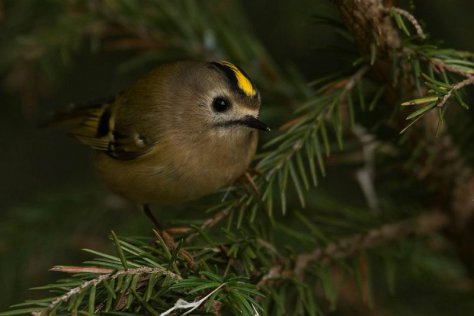Goldcrest VIDEO
Photo and video record Karl Ander Adami, www.adamifoto.com/blog/
Translation Liis
Goldcrest Pöialpoiss Regulus regulus
Towards winter the goldcrest is probably the most numerous bird species in Estonian conifer forests: spruce forests or mixed forests with a majority of spruces, also in pine forests and in the juniper stands on the coast. In addition to the stationary birds some arrive from the north and from the north-east, but it is difficult to note the night travellers. In daytime they keep together in friendly small flocks of some ten birds who gather for the night into balls or bunches of birds, to save warmth in order to survive frost nights…
The larger part of the short day of these really tiny birds is spent on searching for food. For year-round insectivores winter is not easy. Spiders, small insects and their larvae are sought between tree twigs, springtails and mites in bark crevices, tree debris spilled to the ground, and in the moss covering rocks.
The length of the smallest European bird is less than 10 centimetres, weight 5-7 grams. The back plumage is olive green, belly pale grey with a yellow tinge. The wings have two narrow whitish bands, the tail is short.
The prominent feature of goldcrests is the ”golden” lengthwise streak edged in black on the top of the head. It is more yellowish for females. In the golden streak of the males there are flame red feathers and so the streak seems a little darker. The dark-brown, pin-like eyes are surrounded by light grey, the little beak blackish brown, legs brown.
Goldcrests often hang in the branches head downwards like tits, or make a brief hovering flight like a hummingbird – the smallest bird in the world.
As an estimate the early winter number may reach up to a million individuals.









